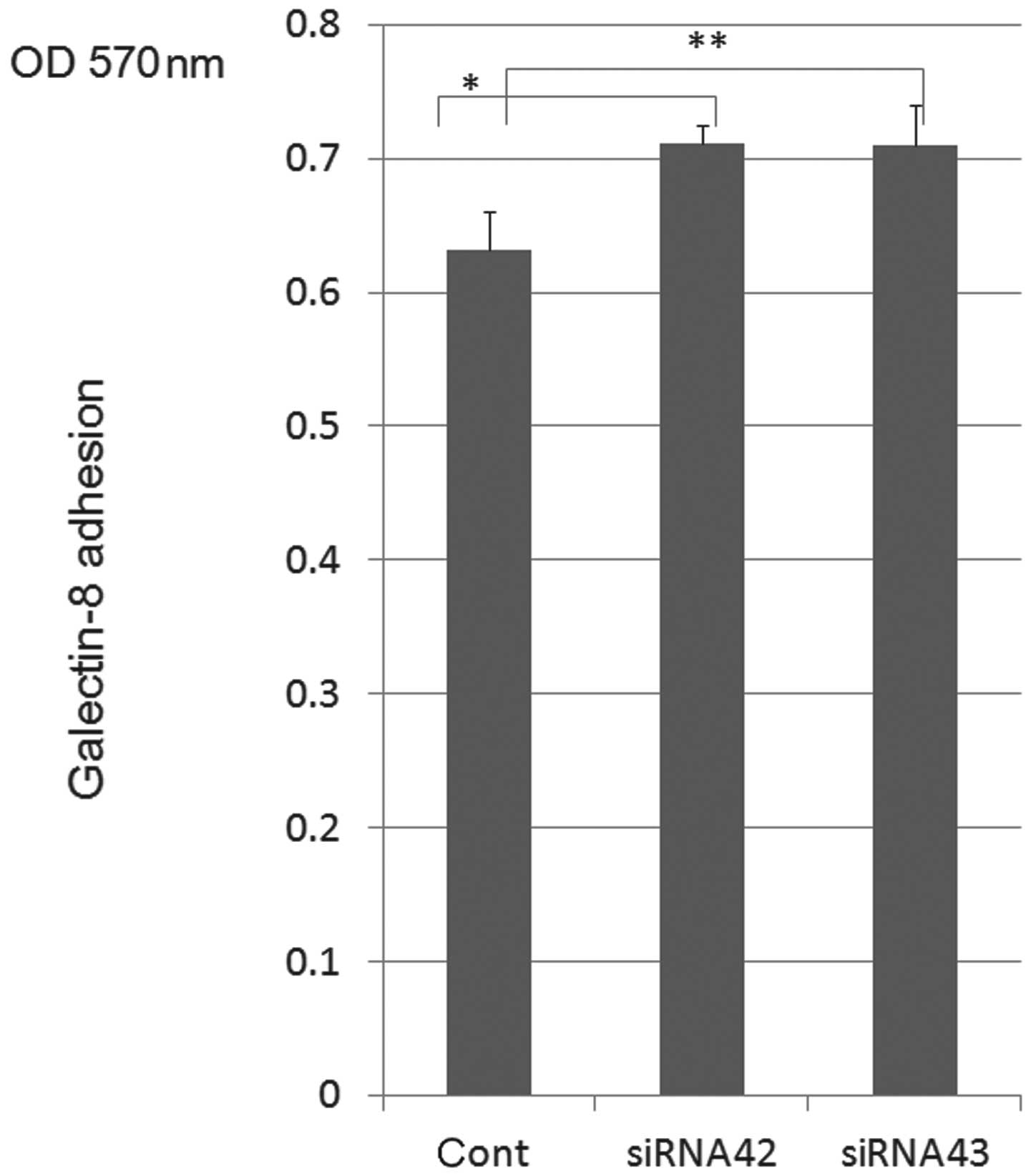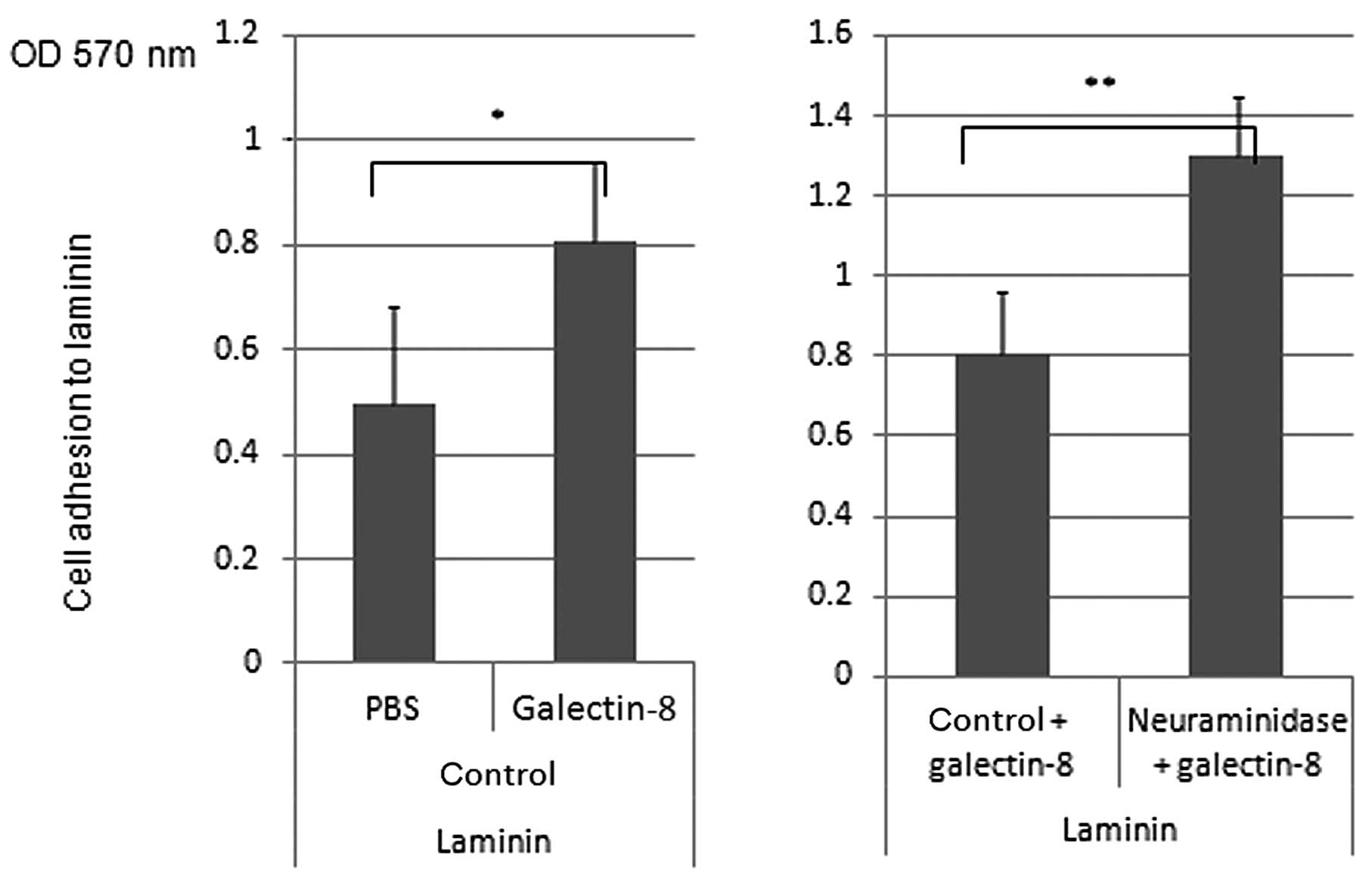Sialylation by β‑galactoside α‑2,6‑sialyltransferase and N‑glycans regulate cell adhesion and invasion in human anaplastic large cell lymphoma
- Authors:
- Published online on: January 7, 2015 https://doi.org/10.3892/ijo.2015.2818
- Pages: 973-980
-
Copyright: © Suzuki et al. This is an open access article distributed under the terms of Creative Commons Attribution License [CC BY_NC 3.0].
Metrics: Total
Views: 0 (Spandidos Publications: | PMC Statistics: )
Total PDF Downloads: 0 (Spandidos Publications: | PMC Statistics: )
Abstract
The interaction between cell surface glycans and extracellular matrix (ECM) including galectins is known to be closely associated with tumor cell adhesion, invasion and metastasis. We analyzed the roles of cell surface sialylation or glycosylation in galectin or ECM‑mediated cell adhesion and invasion of human malignant lymphoma cells. Neuraminidase from Arthrobacter ureafaciens (AU) treatment resulted in reduction of cell adhesion to galectin‑8 in human anaplastic large cell lymphoma (H‑ALCL) which was established in our laboratory. The knockdown of β‑galactoside α‑2,6‑sialyltransferase (ST6Gal1) by siRNA showed inhibition of ST6Gal1 expression in the cytoplasm of H‑ALCL cells on immunohistochemical findings, and showed dramatic enhancement of cell adhesion to galectin‑8. On the other hand, α‑2,3‑specific neuraminidase treatment resulted in moderate enhancement of cell adhesion to galectin‑8. We performed chemically artificial modification of cell surface O‑glycans by treatment of benzyl 2‑acetamido‑2‑deoxy‑α‑D‑galactopyranoside (Bz‑α‑GalNAc) in H‑ALCL. Cell adhesion to galectin‑8 was enhanced by treatment of Bz‑α‑GalNAc suggesting that inhibition of elongation of O‑glycans may enhance cell adhesion to galectin‑8 in H‑ALCL cells. On the other hand inhibition of elongation of N‑glycosylation by tunicamycin (TM) resulted in inhibition of Phaseolus vulgaris‑L (L‑PHA) lectin‑binding activity and inhibited cell adhesion to galectin‑8, laminin and fibronectin. Neuraminidase treatment enhanced cell adhesion to laminin, and knockdown of ST6Gal1 resulted in enhancement of cell adhesion to laminin, but not to fibronectin, collagen type 1 and 4. Galectin‑8 pre‑treatment dramatically enhanced cell adhesion to laminin and neuraminidase treatment also enhanced cell adhesion to laminin in combination with galectin‑8. Rho inhibitor, C3‑transferase pre‑treatment resulted in inhibition of cell invasion to galectin‑8. Phosphatidylinositol 3‑phosphate kinase (PI3K) inhibitor, wortmannin inhibits the cell invasive capacity to galectin‑8. Neuraminidase treatment induces growth inhibition of lymphoma cells by galectin‑8.



















